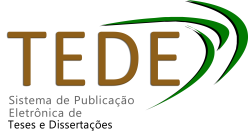| Compartilhamento |


|
Use este identificador para citar ou linkar para este item:
http://www.bdtd.ueg.br/handle/tede/1872Registro completo de metadados
| Campo DC | Valor | Idioma |
|---|---|---|
| dc.creator | Brito, Mateus Godinho Borges de | - |
| dc.creator.Lattes | http://lattes.cnpq.br/2558941310602323 | por |
| dc.contributor.advisor1 | Santos, Cristiano Alexandre dos | - |
| dc.contributor.advisor1Lattes | http://lattes.cnpq.br/4521271424665779 | por |
| dc.contributor.referee1 | Santos, Cristiano Alexandre dos | - |
| dc.contributor.referee1Lattes | http://lattes.cnpq.br/4521271424665779 | por |
| dc.contributor.referee2 | Oliveira, Túlio Fernando Mendanha de | - |
| dc.contributor.referee2Lattes | http://lattes.cnpq.br/3072051367278159 | por |
| dc.contributor.referee3 | Carneiro, Keley Cristina | - |
| dc.contributor.referee3Lattes | http://lattes.cnpq.br/0808538186850613 | por |
| dc.date.accessioned | 2025-11-13T19:36:44Z | - |
| dc.date.issued | 2025-10-20 | - |
| dc.identifier.citation | BRITO, Mateus Godinho Borges de. Do visível ao invisível: as ruas de pedras da Cidade de Goiás e a invenção do patrimônio cultural (1950-1978). 2025. 192 f. Dissertação (Mestrado em Estudos Culturais, Memória e Patrimônio) – Universidade Estadual de Goiás, Goiás, GO, 2025. | por |
| dc.identifier.uri | http://www.bdtd.ueg.br/handle/tede/1872 | - |
| dc.description.resumo | Este trabalho analisa as ruas de pedras do centro histórico da cidade de Goiás, reconhecidas como patrimônio cultural, com o objetivo de compreender sua formação e a relação com os processos de patrimonialização realizados na localidade pela(o) DPHAN/IPHAN na década de 1950 e em 1978. O objetivo principal da pesquisa consistiu em identificar o ponto de partida das transformações na paisagem cultural, especificamente no calçamento das vias, e verificar de que modo tais intervenções foram utilizadas para compor a “invenção” do patrimônio, abrangendo memória, identidade e poder. A metodologia adotada baseou-se em uma pesquisa exploratória, contemplando a análise de fotografias, documentação manuscrita, obras literárias e referências bibliográficas relacionadas ao tema. Os resultados da investigação demonstraram que as intervenções físicas realizadas nas ruas não apenas moldaram a estrutura urbana, mas também foram instrumentalizadas na construção de uma narrativa idealizada sobre o passado da cidade. Embora associadas a um ideal de preservação, as ações de patrimonialização envolvem escolhas e negociações sociais complexas, pois representam “recortes” históricos que delimitam quais bens culturais serão considerados dignos de preservação e quais serão relegados ao esquecimento. Nas representações físicas vinculadas aos símbolos patrimoniais, podem ocorrer reconfigurações de sentidos ou apropriações de elementos de diferentes épocas. Os bens patrimonializados, nesse contexto, podem ser “inventados” com a finalidade de conferir coesão a um discurso homogeneizador, orientado por interesses específicos e pela dominação com base no patrimônio. Como produto complementar ao relatório técnico, foi elaborado um vídeo que apresenta diversas imagens e filmagens do centro histórico de Goiás, intercalando registros de diferentes períodos, os quais atestam as modificações na paisagem cultural desde o início do século XX até a atualidade (2025). | por |
| dc.description.abstract | This study analyzes the stone-paved streets of the historic center of the city of Goiás, recognized as cultural heritage, with the aim of understanding their formation and their relationship with the heritage processes carried out locally by DPHAN/IPHAN in the 1950s and in 1978. The main objective of the research was to identify the starting point of the transformations in the cultural landscape, specifically in the paving of the streets, and to examine how such interventions were used to compose the “invention” of heritage, encompassing memory, identity, and power. The methodology adopted was based on exploratory research, including the analysis of photographs, handwritten documents, literary works, and bibliographic references related to the theme. The results of the investigation revealed that the physical interventions carried out in the streets not only shaped the urban structure but were also instrumentalized in the construction of an idealized narrative about the city’s past. Although associated with an ideal of preservation, heritage processes involve complex social choices and negotiations, as they represent historical “selections” that define which cultural assets will be deemed worthy of preservation and which will be forgotten. In the physical representations linked to heritage symbols, reconfigurations of meaning or the appropriation of elements from different periods may occur. In this context, heritage assets may be “invented” to provide cohesion to a homogenizing discourse, oriented by specific interests and the exercise of power through heritage. As a complementary product to the technical report, a video was produced, presenting various images and footage of the historic center of Goiás, interspersing records from different periods, which attest to the modifications in the cultural landscape from the early twentieth century to the present day (2025). | eng |
| dc.description.provenance | Submitted by Marília Dias (bib.goias@ueg.br) on 2025-11-13T19:36:13Z No. of bitstreams: 3 RELATORIO_TECNICO_MATEUS_GODINHO_BORGES_DE_BRITO.pdf: 40664897 bytes, checksum: 794d0229f91cbc2c8c23eca402db727c (MD5) PRODUTO_MATEUS_GODINHO_BORGES_DE_BRITO.pdf: 344298 bytes, checksum: b6a8fd66ed7d79aac6b4182ce03d7958 (MD5) license.txt: 2109 bytes, checksum: b76a28645f58b21aeda00ac459312a65 (MD5) | eng |
| dc.description.provenance | Approved for entry into archive by Marília Dias (bib.goias@ueg.br) on 2025-11-13T19:36:43Z (GMT) No. of bitstreams: 3 RELATORIO_TECNICO_MATEUS_GODINHO_BORGES_DE_BRITO.pdf: 40664897 bytes, checksum: 794d0229f91cbc2c8c23eca402db727c (MD5) PRODUTO_MATEUS_GODINHO_BORGES_DE_BRITO.pdf: 344298 bytes, checksum: b6a8fd66ed7d79aac6b4182ce03d7958 (MD5) license.txt: 2109 bytes, checksum: b76a28645f58b21aeda00ac459312a65 (MD5) | eng |
| dc.description.provenance | Made available in DSpace on 2025-11-13T19:36:44Z (GMT). No. of bitstreams: 3 RELATORIO_TECNICO_MATEUS_GODINHO_BORGES_DE_BRITO.pdf: 40664897 bytes, checksum: 794d0229f91cbc2c8c23eca402db727c (MD5) PRODUTO_MATEUS_GODINHO_BORGES_DE_BRITO.pdf: 344298 bytes, checksum: b6a8fd66ed7d79aac6b4182ce03d7958 (MD5) license.txt: 2109 bytes, checksum: b76a28645f58b21aeda00ac459312a65 (MD5) Previous issue date: 2025-10-20 | eng |
| dc.format | application/pdf | * |
| dc.language | por | por |
| dc.publisher | Universidade Estadual de Goiás | por |
| dc.publisher.department | UEG ::Coordenação de Mestrado Profissional em Estudos Culturais, Memória e Patrimônio | por |
| dc.publisher.country | Brasil | por |
| dc.publisher.initials | UEG | por |
| dc.publisher.program | Programa de Pós-Graduação em Estudos Culturais, Memória e Patrimônio (PROMEP) | por |
| dc.rights | Acesso Aberto | por |
| dc.subject | Patrimônio cultural | por |
| dc.subject | Invenção | por |
| dc.subject | Cidade de Goiás | por |
| dc.subject | Centro histórico | por |
| dc.subject | Ruas de Pedras | por |
| dc.subject | Calçamento | por |
| dc.subject | Cultural heritage | eng |
| dc.subject | Invention | eng |
| dc.subject | City of Goiás | eng |
| dc.subject | Historic center | eng |
| dc.subject | Stone-paved streets | eng |
| dc.subject | Pavement | eng |
| dc.subject.cnpq | CIENCIAS HUMANAS::HISTORIA | por |
| dc.subject.cnpq | HISTORIA::HISTORIA DO BRASIL | por |
| dc.subject.cnpq | HISTORIA DO BRASIL::HISTORIA REGIONAL DO BRASIL | por |
| dc.title | Do visível ao invisível : as ruas de pedras da Cidade de Goiás e a invenção do patrimônio cultural (1950-1978) | por |
| dc.title.alternative | From the visible to the invisible : the cobble streets of GOIás City and the invention of cultural heritage (1950-1978) | eng |
| dc.type | Dissertação | por |
| Aparece nas coleções: | Mestrado Profissional em Estudos Culturais, Memória e Patrimônio (PROMEP) | |
Arquivos associados a este item:
| Arquivo | Descrição | Tamanho | Formato | |
|---|---|---|---|---|
| RELATORIO_TECNICO_MATEUS_GODINHO_BORGES_DE_BRITO.pdf | Relatório Técnico | 39,71 MB | Adobe PDF | Baixar/Abrir Pré-Visualizar |
| PRODUTO_MATEUS_GODINHO_BORGES_DE_BRITO.pdf | Produto | 336,23 kB | Adobe PDF | Baixar/Abrir Pré-Visualizar |
Os itens no repositório estão protegidos por copyright, com todos os direitos reservados, salvo quando é indicado o contrário.




